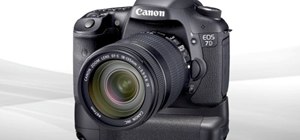
The EOS 90D and M6 Mark II debut a new APSC sensor, increasing the resolution from the 24 Megapixels of previous models to 32.5 Megapixels, making it the highest resolution to date in the APSC format. Like those bodies, it sits in the middle of Canon’s DSLR range, offering a step-up in speed, build, control and features over the triple-digit EOS / Rebel DSLRs, but without the cost and heft of semi-pro bodies like the 7D series. Announced in August 2019 alongside the EOS M6 Mark II mirrorless camera, it’s the successor to the three-year-old EOS 80D, which itself arrived three years after the 70D. Alternatively get yourself a copy of my In Camera book or treat me to a coffee! Thanks!Ĭanon’s EOS 90D is an upper mid-range DSLR with a 32.5 Megapixel APSC sensor, Dual Pixel AF for live view and movies, 45-point AF through the viewfinder, 10fps shooting, uncropped 4k video at 24, 25 or 30p, and a fully-articulated touchscreen. Buy it now! Check prices on the Canon EOS 90D at Amazon, B&H, Adorama, or Wex. But for now, the upgrades across the board still allow the 90D and DSLRs to remain relevant and compelling to those who prefer their form factor and viewfinder to smaller mirrorless cameras with all-electronic composition it’s especially tempting for 60D or 70D owners who want a bunch of upgrades but without changing the look and feel of their bodies. Had Canon equipped the 90D with the 7D II’s viewfinder AF system, it could have had a leader in all respects. Revealingly the mirrorless M6 II which shares the same sensor proved much more capable for action in my tests, but ironically the 90D’s better features made it preferable for video, so choose carefully.


It’s much better at focusing in live view, but the bursts become slower and trying to follow action with the screen alone can prove a challenge. The increased burst speed is a nice bonus, but the viewfinder autofocus system is no better than the 80D and proved unremarkable for fast action in my tess. More than making up for the restrictions for most people though is the sheer confidence with which Dual Pixel AF can keep a subject in focus. In terms of video it’s great to finally enjoy uncropped 4k with Dual Pixel AF on an EOS body, but while it resolves more detail than 1080, it’s not as good as 4k from the best of its rivals, most notably the Sony A6400 and Fujifilm X-T30 and like other recent Canon cameras, there’s no sign of 24p either.

The image quality has the potential to beat 24 Megapixel models, but not by a huge margin and crucially only when fitted with a quality lens. As such there’s upgrades whether you shoot still photos, film video, or like most owners of this series, do both. Summary The EOS 90D becomes Canon’s most powerful mid-range DSLR to date, inheriting the body, side-hinged screen, optical viewfinder and 45-point autofocus of the earlier 80D, while upgrading the sensor resolution to 32.5 Megapixels, offering uncropped 4k video at 25 or 30p, faster burst shooting of 10fps, and reinstating the AF joystick which went missing on the three previous models.


 0 kommentar(er)
0 kommentar(er)
